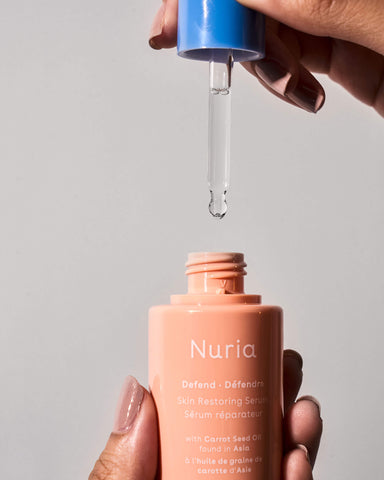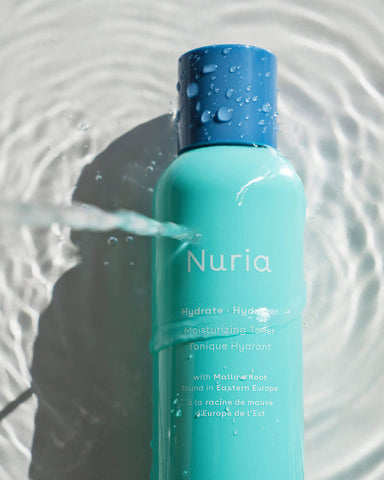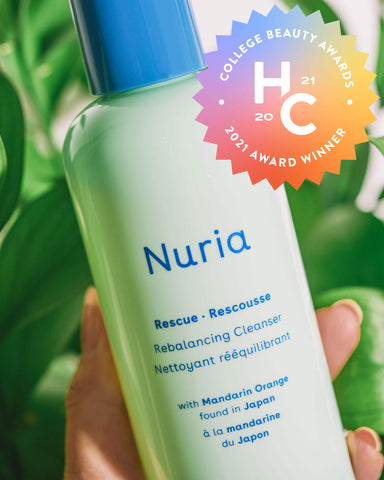
Retinol & the Best Alternatives
As one of the most googled beauty questions, one thing’s for sure: everyone’s talking about it! If you’re not already on the retinol-worshiping bandwagon, it’s fair to feel skeptical—like many responsible fact-checkers, maybe you haven’t yet solved that burning beauty question, “Do I need retinol?” The answer is…well, yes and no…
Unlike our non-negotiables like SPF, retinol-based products are not a one-size-fits-all treatment. How much you use and how often depends on your skin needs and level of sensitivity. Plus there’s another factor to consider: the type of retinol. So, let’s jump to the question you should really be asking, “What type of retinol do I need?”
To unpack this conversation, we collected the most up-to-date insights from NYC dermatologist, Dr. Joshua Zeichner.
Getting to know retinol
Retinol is a chemical derived from Vitamin A and belongs to the retinoid family (more on this soon!). Commonly found in anti-aging cream and serums, it’s the go-to ingredient for treating a variety of skin concerns including lines, dullness, pigmentation, and acne.
Far from overhyped, this amazing ingredient works by speeding up cellular turnover, bringing fresher skin to the surface, along with newer collagen and elastin, explains Dr. Zeichner. This pick-me-up is crucial because as our skin ages, its cellular turnover gets slower and lazier. Retinol lifts the slack, functioning as a sort of “cheat code” for outsmarting the biological clocks of our dermal cells.
Dr. Zeichner notes that many people often confuse retinol as an exfoliator—it’s not! An exfoliant works by dissolving the bonds that glue dead skin cells to the surface of the dermis. Retinol, on the other hand, is like caffeine for your complexion; it accelerates the life cycle of your skin cells, forcing them to get replaced faster.
Other types of retinoids: which one to choose?
Like choosing the spiciness of your salsa, the retinoid family includes a range of intensities, spanning from a barely-there whisper to crazy intense. And just as you wouldn’t gorge on a flaming-hot flavor without building up a tolerance, the same rules apply for treating your skin.
Dr. Zeichner suggests starting out with a lower dose and increasing the amount if your skin adjusts. Certain types of low-concentration retinoids are available over the counter, while higher doses or stronger medical-grade versions require a prescription.
Retinyl palmitate
The gentlest of the bunch, retinyl palmitate is best suited for reactive skin. Since this chemical needs two steps to convert into retinoic acid (the usable form), its effects are quite subtle and gradual. On the upside, Dr. Zeichner notes, “It’s so mild and can be used even if you have sensitive skin.”
Sometimes mild is best, as is the case with the Defend Triple Action Eye Cream, featuring a brightening combo of retinyl palmitate and cucumber. There’s also ginseng in the mix—a popular ingredient to re-jolt the blood flow and awaken tired under eyes.
Retin-A
Purer than retinol, you need a prescription to get your hands on Retin-A. It’s among the strongest members of the retinoid family (before heavy hitters like tretinoin or Accutane).
Since Retin-A is already close to its usable form (retinoic acid), it gets absorbed by the skin more quickly than retinol which takes longer to convert, explains Dr. Zeichner. It’s prescribed to patients battling acne, especially if their skin isn’t responding to other options like salicylic acid or benzoyl peroxide.
Tretinoin
Second strongest to Accutane, tretinoin is usually prescribed to treat advanced acne. By increasing the rate of cellular turnover, it tightens pores to prevent debris and oil from festering and forming a pimple.
Along with clearing your skin, tretinoin also has a side bonus: smoother and more illuminated skin! Now you’re probably thinking, “Whyyyy am I not using this stuff?!!” Well, if we revisit our salsa analogy, it’s the same reason you’re not going to order a flavor called Killer Flames of Hell before warming up to Beginner Sizzler. Unless we’re skin sadists, we won’t use a potent retinoid like tretinoin unless we’ve developed tolerance to our current product.
Exposing our skin to higher retinoids without building a tolerance first can cause chemical burns. Keep in mind that people who need these higher prescriptions have severely stubborn acne; they’ve also already tried retinol and Retin-A with no success.
Natural alternatives to retinol
With the rise of clean beauty, traditional retinoids are making room in the market for plant-based versions. “It works through the same receptors that retinol uses, which is why many refer to it as a natural retinol alternative,” says Dr. Zeichner. Derived from fruits and shrubs, these natural Vitamin A derivatives are worth talking about!
Rosehip oil
Just ask models Karlie Kloss and Miranda Kerr—rosehip oil is one of the most effective natural anti-aging remedies. According to Dr. Zeichner, "Rosehip seed oil contains Vitamin A and essential fatty acids that soothe skin and reduce inflammation.” Not only does the Rescue Balancing Cleanser contain Rosehip oil but it also features antioxidant-packed K-beauty ingredients: Mandarin Orange, Rice Water and Seaweed.
Sage leaf oil
Rich in Vitamin A, Sage leaf oil works to resurface your skin while combating free radicals, wrinkles, fine lines, and other signs of aging. But beware—purely on its own, Sage oil is too strong to apply directly to your skin. The Hydrate Moisturizing Toner crafts the ideal balance of Sage oil and complimentary soothers like Cucumber, Chamomile and Aloe.
Carrot Seed oil
Carrot seed contains a high concentration of beta carotene, which is a nutritious precursor of Vitamin A. In addition to having retinoid properties, Dr. Zeichner says “There is data to suggest that it helps neutralize free radicals to protect the skin from environmental exposures like UV light.” He recommends using carrot seed enriched treatments, like our Defend Skin Restoring Serum, which protects against dullness caused by stress, sleep-deprivation and airborne toxins.
Exploring the spectrum of retinoids is a marathon, not a sprint. As your skin needs continue to change, you may variably switch between natural and chemical versions or even opt for a lower dose during dry seasons. Keep in mind that each type varies in strength and side effects—and stronger is certainly NOT always better! What works wonders for your best friend might not work for you. Be skin-smart.
About the author, Naomi Furgiuele
Naomi is the founder of Nuria and a self-professed nerd with a love for all things science and skin care. She’s had a hand in product development for some of the biggest global beauty brands in the business, gets some of her best ideas while out on a run, and loves her exfoliator almost as much as her awesome family.



